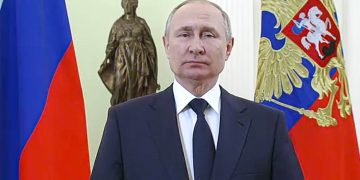The highfalutin objective behind the overnight scrapping of Rs 500 and Rs 1000 bank notes November 8, 2016 was meant to tighten the screws on circulation of black money. The government tom-tommed the idea as a sure shot measure to purge the economy of the scourge of slush money that went into funding of anti-national and terrorist activities in the country. A report released by the Reserve Bank of India Wednesday, the first official post-mortem of the colossal exercise 22 months back, has given lie to the government’s grand claim. It now turns out that all but Rs 10,720 crore of the 15.4 lakh crore bank notes returned to the banks. This indicates that the note ban has not worked as desired.
Prime Minister Narendra Modi had made tall claims that the note recall would put to naught over `3 lakh crore of unaccounted money that was in circulation then. But this was not to be. The RBI report said 99.3 per cent of the `500 and `1000 notes that were invalidated November 8, 2016 returned to banks. According to the report, after verification and reconciliation, the total value of the junked notes as on November 8, 2016, was `15,417.93 lakh crore. The total value of the notes that returned to the banks was `15,310.73 lakh crore. Thus, barring `10,720 crore, the entire money in the circulation returned to the system.
Note ban and implementation of the Goods and Services Tax (GST) are said to be two milestone reform measures by the NDA II government. While the GST had been endorsed by the UPA-II government and it had already set the GST ball rolling, the post-haste manner in which the Modi government pushed through the GST invited flak from all quarters. The note ban was absolutely a unilateral decision of this government. The decision had inconvenienced one and all in the country. Poor people, small traders, farmers had been hit the worst. Lakhs of people lost jobs as factories across the country shut overnight. Managements found it difficult to run units as there were lots of restrictions on circulation of money. There was no cash to make payments. There were massive lay-offs. Workers returned homes jobless. There was chaos all around. Long queues were seen outside banks and ATM kiosks to withdraw money. Marriages were postponed. Over a hundred people died frustrated by the measure. The demonetisation shaved off nearly 1.5 per cent of the country’s GDP. Former Finance Minister P Chidambaram said the total business losses on account of note recall amounted to `2.5 lakh crore.
The government chose to brazen it out. It said this was a small price to pay to achieve a much loftier goal. It justified the exercise on the alibi that the note ban will completely wipe out the menace of black money. It boasted that `3 lakh crore of old currencies will not be returned for fear of scrutiny. However, the RBI report Wednesday has unraveled it. Expectations that the proportion of high-denomination notes in circulation would decline have also been belied. The report reveals that the share of `500 and `2000 banknotes, which together accounted for 72.7 per cent of the total value of currency in circulation as on March 31, 2017, has in fact gone up to 80.2 per cent as on March 31, 2018.
The growth clock clawed back. Shutting of such large number of small and medium enterprises (SMEs), a potent driver of exports, skewed up the balance of payments. The current weakening of the Indian rupee against the US dollar is fallout from the note ban. Rupee had breached below 70.50 against dollar Wednesday. Experts say, rupee may go down to 75 sooner than later. Shrinking of exports, massive joblessness and drying out of purchasing power of people in the wake of the demonetisation had a debilitating impact on the growth momentum. The free fall of rupee is a direct corollary of the note recall. The RBI needs to be complemented for nailing the DeMo lie.
Bureaucratic yoga
If there’s one thing India’s babus do well, it’s dressing up flexibility as policy. Case in point: the latest extensions...
Read more





































